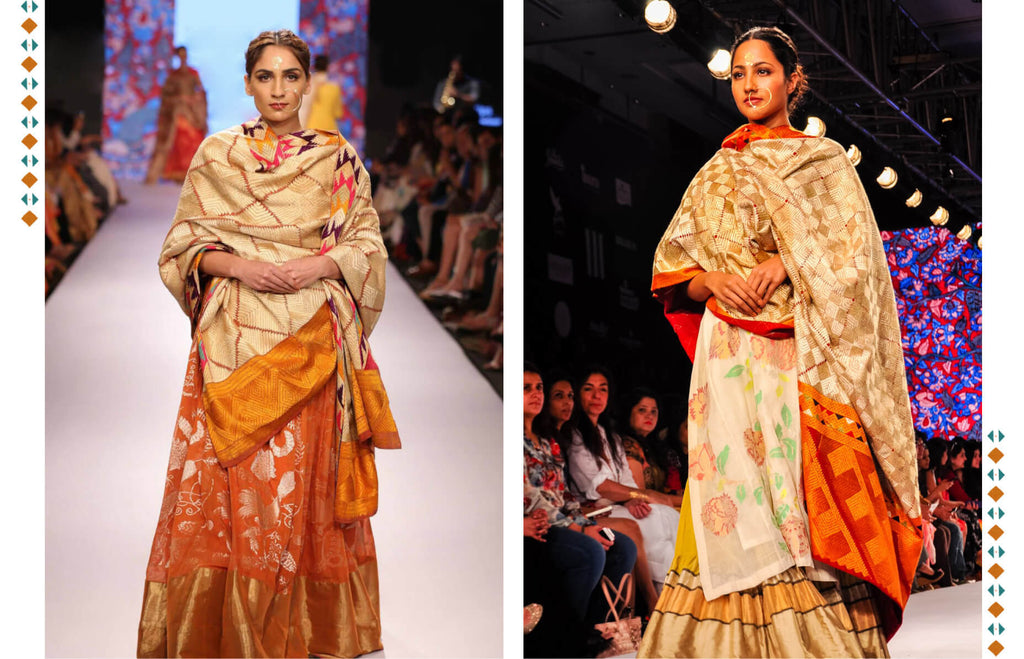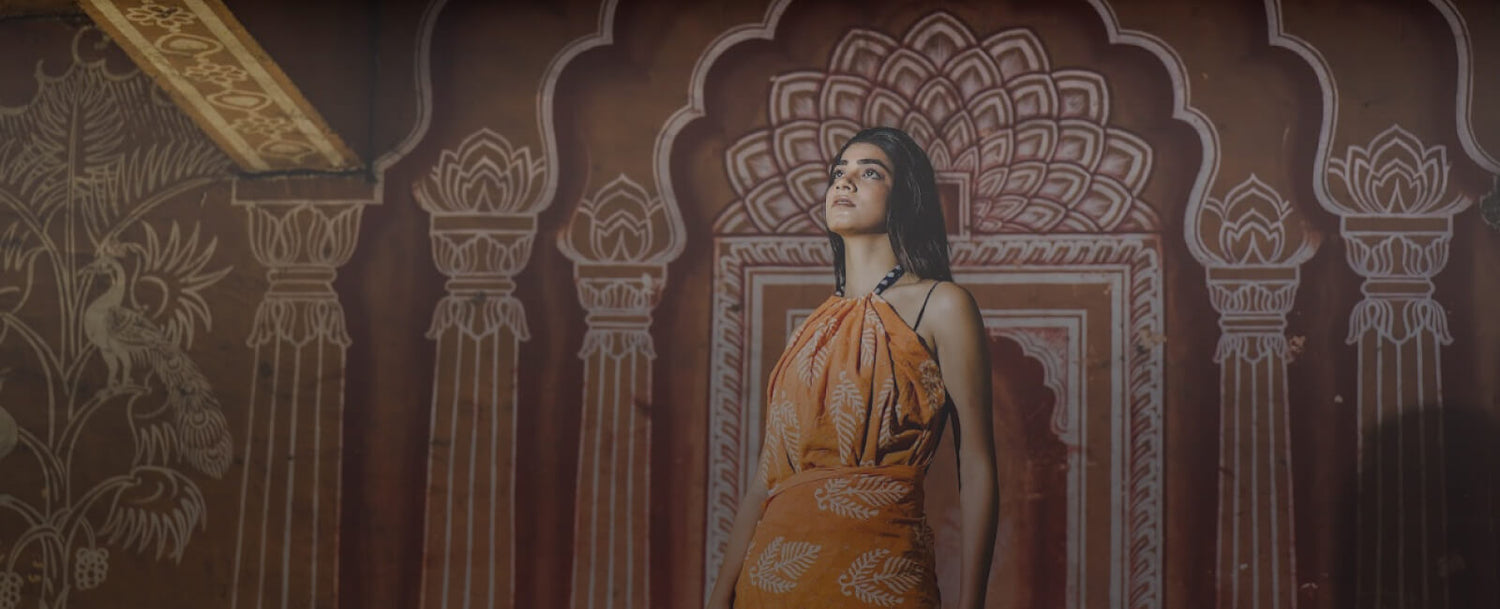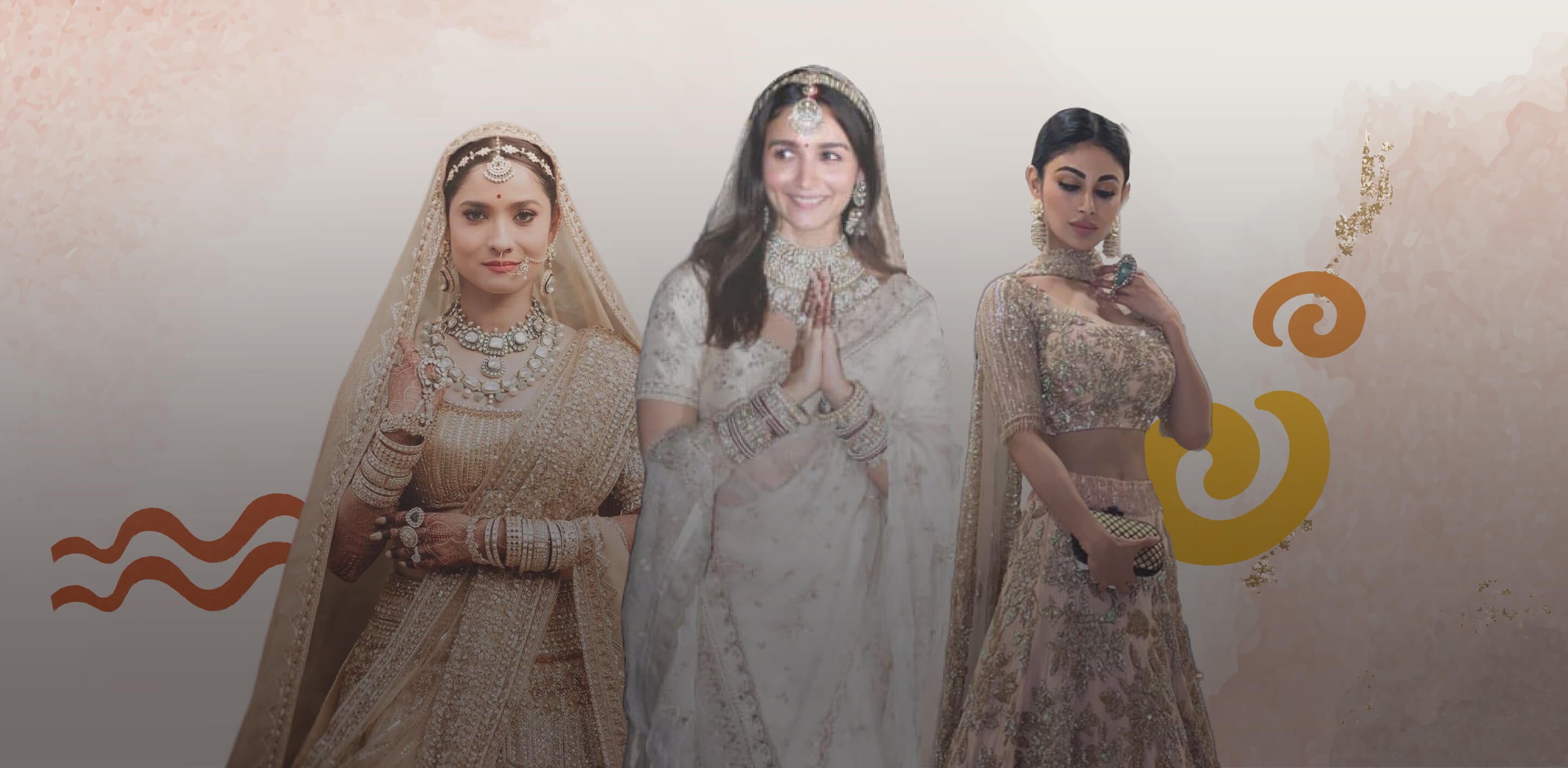What makes India the most incredible nation is its immortal cultural continuity especially when there is so much diversity. Even though we mostly classify cultural identities by languages that people speak but even before one speaks, it’s the way people style themselves in so many ways across all corners of India, that gives them their unique identities.
The tremendous variety of designs available today is the result of the knowledge and skills of the craftsmen that have been passed to them from generation to generation. No wonder why each cultural corner of India has its own unique fabric and style.
This blog is a tribute to this unique heritage of Indian fabrics and in all its modesty will attempt to cover the rich legacies of major Indian fabrics that continue to find their way into modern adaptations by designers across the globe.
-
Embroidered Fabric
The beauty of embroidery stays in its fine art of needlework. Mostly practiced by women, embroidery is an extremely skillful art that has been in practice since Indus Valley Civilization.
Every region of India has its own embroidery art. Let us take a look at some of the most famous embroideries prevalent today from different parts of India:
NORTHERN INDIA

The local fabric vendors of our cities sell beautiful shawls calling it the work of Kashmiris. Ever wondered what Kashmiri Art is? It is Kashida embroidery which is inspired by the natural surroundings of Kashmir depicted in the form of flora and fauna.
Phulkari, art originating from Punjab, is done on a handwoven material of Khaddar. There are particular colors of thread being used for the phulkari embroidery i.e. shades of Red, Green, Golden Yellow, Orange, Blue, and more.
WESTERN INDIA

Practiced by different communities of Gujarat, Gujarat Embroidery is one of the most popular embroideries in Western India. Some of the styles of this embroidery are Mochi Bharat, Soof Bharat, Abhla Bharat, Moti Bharat, and Kachcho Bharat.
Parsi Embroidery, another elegant embroidery originating from the Parsi communities of Mumbai is admired all over India. It is mostly done on the silk fabric for decorating Parsi garas, also known as heirlooms and jhablas.
CENTRAL INDIA

Chikankari, originating from Lucknow, is a white embroidery art. It is believed that Nur Jahan, invented this beautiful art of white embroidery after she decorated her husband i.e. Jahangir’s white cap with white embroidery.
Phool Patti, a geometric style of embroidery takes its inspiration from the flowers and leaves. Traditionally used for dupattas and sarees only but nowadays designers are experimenting with this embroidery style for designing curtains, table linens and bed covers also.
SOUTHERN INDIA

Kasuti embroidery, originating from Karnataka, can still be found in our mother or grandmother’s closet. Every woman has at least one black or Chandrakali sari decorated beautifully with kasauti embroidery.
Lambadi Embroidery comes from rural areas of Karnataka and Andhra Pradesh practiced by their Banjara women. Enthralling embellishments like cowrie shells, coins, and mirrors are used in this art of embroidery.
EASTERN INDIA

Kantha Embroidery, coming from parts of West Bengal, was traditionally used to create embroidered fabrics from old used fabrics. This embroidery style is extremely famous for decorating white Indian cotton fabric with different color threads that are also drawn from the borders of old saris.
Just like Kantha embroidery, there is another embroidery style, Sujani, which was also traditionally done on old saris to transform a sari into a quilt. These quilts were considered auspicious as it was a tradition to create Sujani quilts at the birth of a baby.
Modern Adaptation of Embroidery Art by Fashion Designers

Gaurang Shah’s “kalpavriksha” collection in Lakme Fashion Week Summer/Resort 15, depicts the best of traditional Indian cloth weaving.
In this collection, we can revisit the subtle khadi clothes with a representation of the Tree of Life, depicting the work of Jamdani weavers of Andhra Pradesh and Bangladesh.
Gaurang creatively blended the khadi with prints of Phulkari, Kalamkari, and Chikankari into a charming and classic modern collection.
-
Resist Dyed Fabrics (Tie and Dye Technique)

Resist Dyeing technique is a traditional tie and dye technique of coloring the fabric to create patterns by blocking some areas of the fabrics so that the resultant fabric has just those areas colored which were unblocked.
Bandhej and Ikat are the two most commonly found resist-dyeing techniques.
Bandhej
Bandhej of Rajasthan, is very similar to the Bandhani of Rajasthan in its production process, except the designs are also in the form of small boxes, Laddu, kori, and not only resist dots like Bandhani.
Ikat
The word Ikat, derived from the Malay-Indonesian word ‘mangiikat’, which means to bind or knot, itself depicts the technique behind it. The uniqueness of Ikat lies in its hazy patterns on the fabric which comes as a result of tie and dye of yarns before the weaving is done.
Modern Adaptation of Traditional Ikat by Fashion Designers today:

Shilpa Reddy, a Hyderabad-based fashion designer also showcased her Handloom Ikat- “Floral Geometry “collection in New York highlighting the beauty of geometric-styled Ikats inspired by the blossom of floral in Spring. Tapsee Panu looks stunning in this geometric Ikat outfit.
-
Printed Fabrics

Rajasthan has been known for fabric printing for ages. Sanganer and Bagru are two of the most famous villages of Rajasthan known for block printing and each village’s print has a uniqueness of its own.
Bagru prints, originating from Bagru village of Rajasthan, are practiced on cotton, Silk, and Silk blended fabrics. The prints of Bagru take their inspiration from 17th-century Persian motifs which are evident in its designs. Flowers, leaves, buds, dancing women, warrior men, chess, lines, and dots are some of the patterns visible in this Indian print fabric.
Sanganer prints come from the Sanganer village of Rajasthan where printing on fabrics is practiced as an ongoing tradition coming from generations. Mostly done on light-colored fabrics like white and off-white, these prints are popular for decorating Scarves, Dupattas, Saris, Salwar Kameez, bedcovers, curtains, etc.
Another block print that is equally beautiful and unique is Kalamkari. Originating from Andhra Pradesh, it takes its name from the art of pen. Kalam means ‘pen’ and Kari means ‘art’. It was so popular in ancient times that there was a separate name that was created for Kalamkari printed fabrics i.e. ‘Chintz’.
Modern Adaptations of Block Prints by Fashion Designers

Fashion Designer Purvi Doshi showcased “The Renaissance '' Collection in Lakme Fashion Week Summer 14. The collection truly displayed her love for nature and Indian culture. She made the perfect choice of pure cotton clothes dyed in naturally occurring colors. The collection was a mix of shades of reds, Greys, Khaki green, Deep green, off whites, and Indigo which look magnificent in block printing. The Renaissance era marked the rebirth of humanism and the revival of our culture in the form of art. The collection showcased the same era depicting rebirth and reconstruction by connecting two Arts-Europe and Gujarat.
Check out the perfect blend of color blocking with European inspired outfit:
We also happen to be a magnet for suggestions, and would love to catch yours….throw us yours on hello@fabriclore.com




